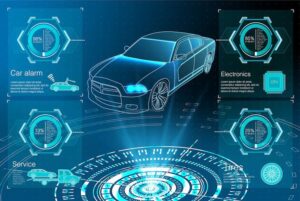Introduction
Automotive cybersecurity has become a critical concern in 2025 as vehicles increasingly rely on software and connectivity, transforming them into potential targets for cyber threats. This shift from mechanical to software-driven vehicles introduces new risks, making cybersecurity a core aspect of automotive safety and compliance. A compelling fact highlighting the urgency is that over 100 ransomware attacks targeted the automotive sector in 2024, with more than 200 data breaches reported, significantly impacting safety and operational availability23.
1️⃣ Understanding the Concept
Automotive Cybersecurity refers to the practices and technologies used to protect vehicles from cyber threats. A simple analogy is comparing vehicle cybersecurity to home security: just as homes need locks and alarms to prevent intruders, vehicles require robust cybersecurity measures to safeguard against digital intrusions. In the broader automotive landscape, cybersecurity is essential for ensuring the safety of drivers and passengers by protecting against remote takeover attacks, data breaches, and other malicious activities15.
2️⃣ Challenges & Risks
Major cybersecurity threats include:
- Remote Takeover Attacks: Hackers can control vehicle functions like brakes and steering remotely1.
- Data Breaches: Personal and financial data can be stolen, compromising privacy1.
- AI-Driven Risks: AI integration introduces new vulnerabilities, such as unauthorized commands and data breaches4.
Statistics show that in 2024, over 60% of incidents had a high-massive impact, involving thousands to millions of mobility assets3.
3️⃣ Best Practices & Solutions
Best practices include:
- End-to-End Security Testing: Conducting penetration testing and vulnerability assessments1.
- ISO/SAE 21434: Implementing this standard ensures cybersecurity is integrated throughout the vehicle lifecycle5.
- Cybersecurity Management Systems (CSMS): Maintaining ongoing cybersecurity monitoring and risk assessments1.
Practical steps for OEMs and suppliers involve embedding security at every development stage and adopting a “security by design” approach5.
4️⃣ Tools & Technologies
Tools and technologies that help mitigate risks include:
- AI-Driven vSOCs (Virtual Security Operations Centers): Enhancing defenses with AI and ML technologies2.
- Secure OTA Updates: Ensuring updates are tamper-proof to prevent firmware manipulation1.
- Threat Analysis and Risk Assessments (TARA): Conducting comprehensive risk evaluations1.
Innovative solutions involve leveraging AI for predictive threat detection and response.
5️⃣ Future Trends & Industry Outlook
The industry is evolving with:
- Emerging Regulations: Standards like AIS 189 in India and new regulations in China are being implemented12.
- AI Integration Risks: AI will introduce new attack vectors, requiring advanced security measures4.
- EV Charging Infrastructure Risks: EV charging systems are becoming targets for cyberattacks4.
Expert opinions predict a continued rise in cyber threats, emphasizing the need for robust, collaborative defense strategies34.
Conclusion
In conclusion, automotive cybersecurity is no longer an optional feature but a critical requirement for the future of transportation. As vehicles become increasingly connected, the risks of cyber threats escalate, necessitating proactive measures like end-to-end security testing and adherence to standards like ISO/SAE 21434. To stay ahead, consider consulting with cybersecurity experts to ensure your vehicles are secure and compliant with evolving regulations.
Will the automotive industry be able to close the cybersecurity gap before it’s too late?
Keywords & SEO Tags: Automotive Cybersecurity, Connected Vehicles, Ransomware Attacks, ISO/SAE 21434, AI-Driven Risks, vSOC.
References:
–1 Business World: The New Battleground: Why Automotive Cybersecurity Is Critical In 2025
–2 Upstream: 2025 Global Automotive Cybersecurity Report
–3 Information Security Buzz: Upstream’s 2025 Automotive And Smart Mobility Cybersecurity Report
–4 VicOne: 2025 Automotive Cybersecurity Report
–5 PTC: An Overview of ISO 21434 for Automotive Cybersecurity




